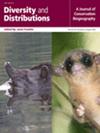When Birding Hotspots Get Too Hot: A Geographic Evaluation of Wildfire-Related Disturbance on Spatiotemporal Biases in Citizen Science Data
Abstract
Aim
Long-term monitoring is critical for ecology and conservation, especially as non-stationary climatic conditions increase. Citizen science projects offer long-term georeferenced data from thousands of observers across diverse geographic areas. Despite the attraction of these datasets for biogeographical research and conservation planning, data collection commonly lacks standardised probabilistic sampling, which can increase observer bias, decrease precision of parameter estimates, and increase risk of spurious results when using the associated species data. Additionally, environmental disturbance may affect observer behaviour, confounding observed patterns in species responses. We aimed to test the effects of wildfire disturbance on observer biases in locality selection and return rates by citizen scientists registered with eBird, a globally available bird observation database.
Location
Western USA.
Methods
We used a long-term (10-year) dataset of 47,662 localities from 1788 eBird observers to calculate resource selection functions and explain observer locality selection as a function of wildfire and non-fire-related environmental covariates. We calculated spatiotemporally explicit covariates from the Monitoring Trends in Burn Severity program and also developed generalised linear mixed models to predict the probability of observers returning to localities in response to fire and non-fire variables.
Results
Our results show that fire characteristics predicted locality selection and the probability of returning to a locality. Closer, more recent, larger and more severe fires showed the greatest effects on spatiotemporal patterns of observer sampling bias. Other non-fire-related variables related to locality attractiveness, land use, convenience and accessibility were also important.
Main Conclusions
Our results demonstrate that landscape disturbance introduces spatiotemporal biases in citizen scientist locality selection and revisitation. Researchers using citizen science data can follow our modelling approach to quantify disturbance-related observer sampling biases and estimate bias-corrected parameters necessary for ecological studies. Without this, observer biases inherent in these data can lead to increased bias, decreased precision in parameter estimates and spurious results. We propose recommendations to enhance the value of citizen science data for biological monitoring and conservation.


 求助内容:
求助内容: 应助结果提醒方式:
应助结果提醒方式:


